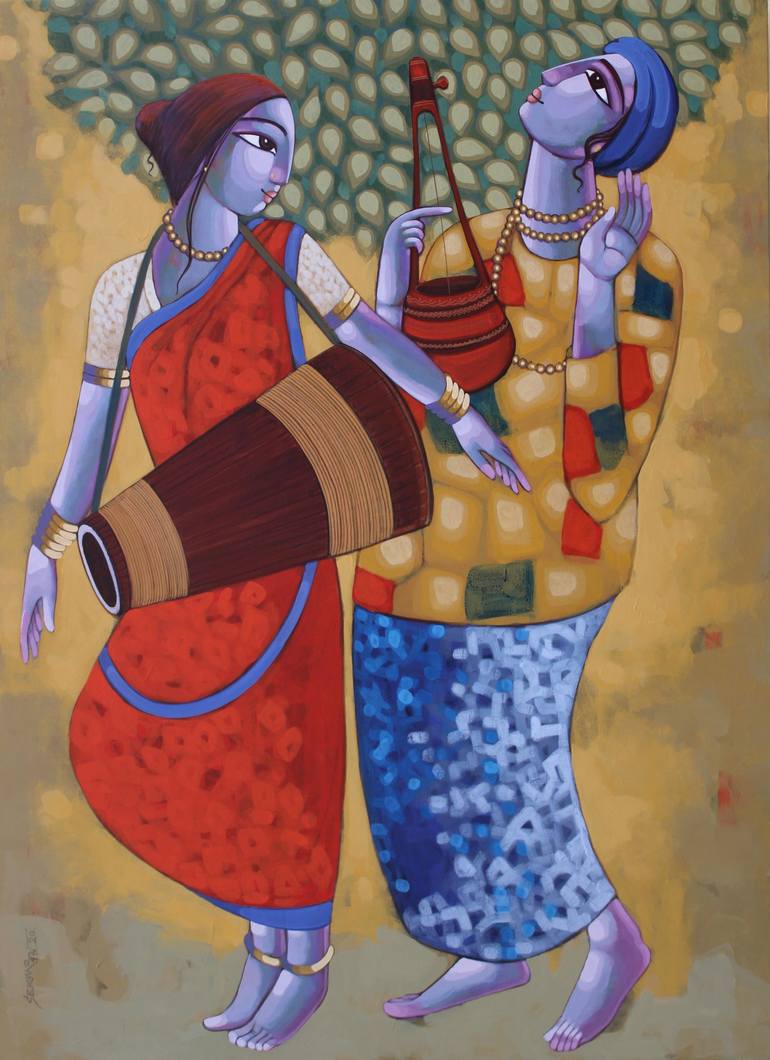





388 Views
31
View In My Room
Painting, Acrylic on Canvas
Size: 48 W x 66 H x 1 D in
Ships in a Tube
$4,550
Shipping included
14-day satisfaction guarantee
Trustpilot Score
388 Views
31
ABOUT THE ARTWORK
DETAILS AND DIMENSIONS
SHIPPING AND RETURNS
Baul is not just one of the many things unique to Bengal. This wandering music cult has a special place in the history of world music. The word "Baul" has its etymological origin in the Sanskrit words "Vatula" (madcap), or "Vyakula" (restless) and used for someone who is "possessed" or "crazy".Origi...
Year Created:
2020
Subject:
Styles:
Mediums:
Painting, Acrylic on Canvas
Rarity:
One-of-a-kind Artwork
Size:
48 W x 66 H x 1 D in
Ready to Hang:
Not Applicable
Frame:
Not Framed
Authenticity:
Certificate is Included
Packaging:
Ships Rolled in a Tube
Delivery Cost:
Shipping is included in price.
Delivery Time:
Typically 5-7 business days for domestic shipments, 10-14 business days for international shipments.
Returns:
14-day return policy. Visit our help section for more information.
Handling:
Ships rolled in a tube. Artists are responsible for packaging and adhering to Saatchi Art’s packaging guidelines.
Ships From:
India.
Customs:
Shipments from India may experience delays due to country's regulations for exporting valuable artworks.
Need more information?
Need more information?
Life is a river, starts from the hilly area, it flows down on plain, collecting the stones, soils and some dirt, making all to fertilizing others but burden for itself. Sometimes it gets fresh water from rain or by any other small stream, which makes the river strong and powerful. His life is also the same; it started on 17th August 1973. It was not so smooth for him in his childhood days due to some political and socio economic reasons. In his school days he had that urge for energy which could make him more empowered, more spontaneous. After few days when some useless particles being already collected in his life and the 'Gati'(speed) was obstructed, he got someone who was just like a fresh stream to his blockade wave and enhanced its speed. He was his Guru (teacher) late. Prof. Gopal Sanyal. With all his guidance and blessings he did eight solo exhibitions, participated in various group shows and camps. He's very much influenced by the Indian mythological characters specially "˜Krishna and His surroundings'. He's getting immense pleasure by depicting the different postures of that great character of "˜Mahabharata', because that particular character is seemed to him a perfect combination of love, passion and thoughtful mind. Thus his journey is going on ....
Why Saatchi Art?
Thousands of
5-Star Reviews
We deliver world-class customer service to all of our art buyers.
Global Selection of Original Art
Explore an unparalleled artwork selection from around the world.
Satisfaction Guaranteed
Our 14-day satisfaction guarantee allows you to buy with confidence.
Support Emerging Artists
We pay our artists more on every sale than other galleries.
